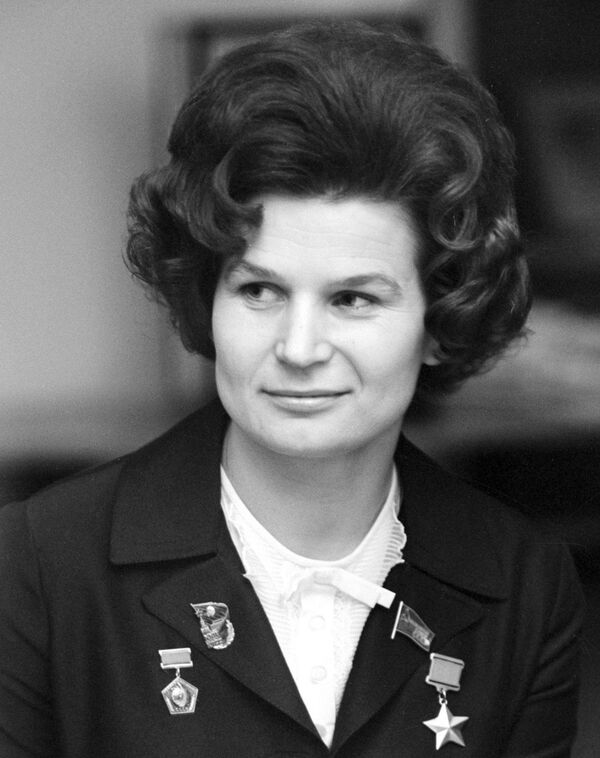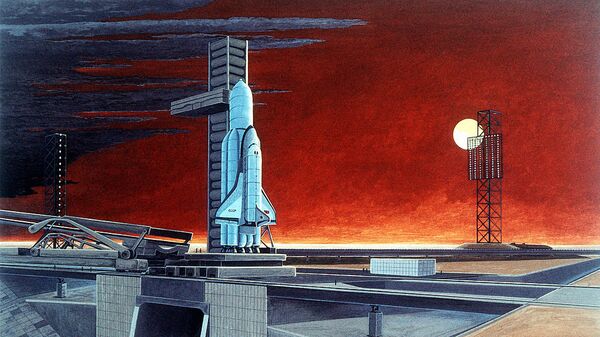While a major accomplishment, it wasn't entirely smooth sailing for the maverick craft. The orbiter's primary objectives were to photograph the Martian surface, determine the planet's temperature, study its topography, composition and physical properties, measure the atmosphere's properties, monitor solar wind and magnetic fields, and act as a communications relay to Earth.
#ThisDayInSpace In 1971 The Soviet Union launched #Mars 2 and 3 spacecraft. #space pic.twitter.com/cJtWMYQVRV
— Perth Observatory (@perthobs) May 19, 2017
However as bad luck would have it, a particularly violent and voluminous dust storm on Mars deleteriously impacted the mission. The atmosphere was thick with "a planet-wide robe of dust," the largest storm ever observed in Mars' history — as a result, the surface was totally obscured. Unable to reprogram mission computers, Mars 2 dispatched its lander immediately, leaving the orbiter to snap a series of images of featureless dust clouds below, rather than the surface mapping intended.
Nonetheless, the mission was largely successful. Mars 2 sent back transmissions until August 1972, completing 362 orbits in the process. It sent back vital pictures and data, revealing mountains as high as 22 kilometers, atomic hydrogen and oxygen in the upper atmosphere, surface temperatures ranging from — 110 °C to 13 °C, surface pressures of 5.5 to 6 mbar, water vapor concentrations 5,000 times less than the Earth's. This information enabled the creation of surface relief maps, and offered invaluable insights on Martian gravity and magnetic fields. Much of the intelligence gleaned still informs understanding of Mars to this day — and the orbiter continues to float in Martian orbit contemporaneously.
The groundbreaking expedition followed not long after the USSR made history by landing the first robotically controlled rover in space — Lunokhod 1 ("moonwalker" in Russian) traveled to the moon November 10, 1970, achieving a soft landing a week later. Measuring over seven feet long, Lunokhod 1 ran on eight wheels and was equipped with four television cameras and an X-ray spectrometer. It roamed for 322 days, analyzing soil samples and transmitting photographs back to Earth.
30 March 1971: stamp issued in GDR depicting unmanned Soviet lunar rover Lunokhod 1 pic.twitter.com/Mt2lxw1w6G
— German at Portsmouth (@GermanAtPompey) March 30, 2017
It ceased communication September 14, 1971 for reasons unclear, and its precise location was unknown until 2010, when researchers using successfully bounced a laser beam off Lunokhod 1's light reflector. Ever since, researchers have continued using the reflector to conduct valuable ranging experiments, measuring the moon's movement in space. The achievement arguably makes the trip to Mars undertaken by NASA's Curiosity rover ever so slightly less impressive.
This Belka and Strelka statue is the cutest https://t.co/BtITBY8g5u
— Astrid 🌹 (@themothmanstan) May 14, 2017
Of course, it's not merely spacecraft the USSR had a knack for firing into space. Most will likely be familiar with Laika the dog's trip into space aboard Sputnik 2, the epic voyage of Belka and Strelka less so. On August 19 1960, the female pair were blasted into orbit aboard Vostok.
The intrepid canine cosmonauts became international media darlings when they safely returned to Earth, after orbiting for 24 hours. Later, Strelka had six puppies, one of which was given to Jacqueline Kennedy as a gift.
Likewise, Yuri Gagarin's status as first man in space is renowned, but shamefully few celebrate the brave Valentina Tereshkova, who on June 16, 1963 lifted off in Vostok 6 to orbit the Earth three days, becoming the first woman in space in the process.

During her spaceflight, she performed experiments testing the effects of weightlessness on the female body, and took photographs that helped scientists identify an aerosol layer in Earth's atmosphere. In a 2007 Pravda interview, she expressed a desire to return to space, saying that if she had she would "enjoy flying to Mars."
"This was the dream of the first cosmonauts. I wish I could realize it. I am ready to fly without coming back."
Soviet Air Force pilot Alexei Leonov was also the first person to walk in space. His mission was fraught with danger and drama — his pressurized suit became inflated during his 10 minute float in the vacuum of space, making reentering the Voskhod 2 capsule impossible. He was forced to bleed off some of the oxygen in his suit in order to squeeze back through the airlock, a process that caused him to contract the bends.
A spaceship heads to the Moon after refueling at a #space station in 1967 Soviet #science art by Andrei Sokolov and cosmonaut Alexei Leonov. pic.twitter.com/TFpdvktxpE
— Humanoid History (@HumanoidHistory) May 3, 2017
Still, despite the trauma of the episode, Leonov found the experience of floating in space extremely affecting, saying he felt like "a seagull with its wings outstretched, soaring high above the Earth." Leonov paints scenes of the Earth as he viewed it during his spaceflights.




